Vengeful Cat Demons in Japanese Legends: The Sinister Bakeneko
Cat Youkai

Their story, reaching into the depths of the darkest tales of Japanese youkai demons, stretches along the entire history of the Land of the Cherry Blossom. From ancient legends, where their dark figures flit through pages written in ancient ink, to modern works of pop culture, where they come to life in the colorful frames of anime, bakeneko always find a way to outsmart, surprise, and scare. So, let us embark on a journey through the winding paths of Japanese mythology, where the ominous eyes of the bakeneko menacingly gaze at the curious in the dark.
What does the name of this cat spirit mean?
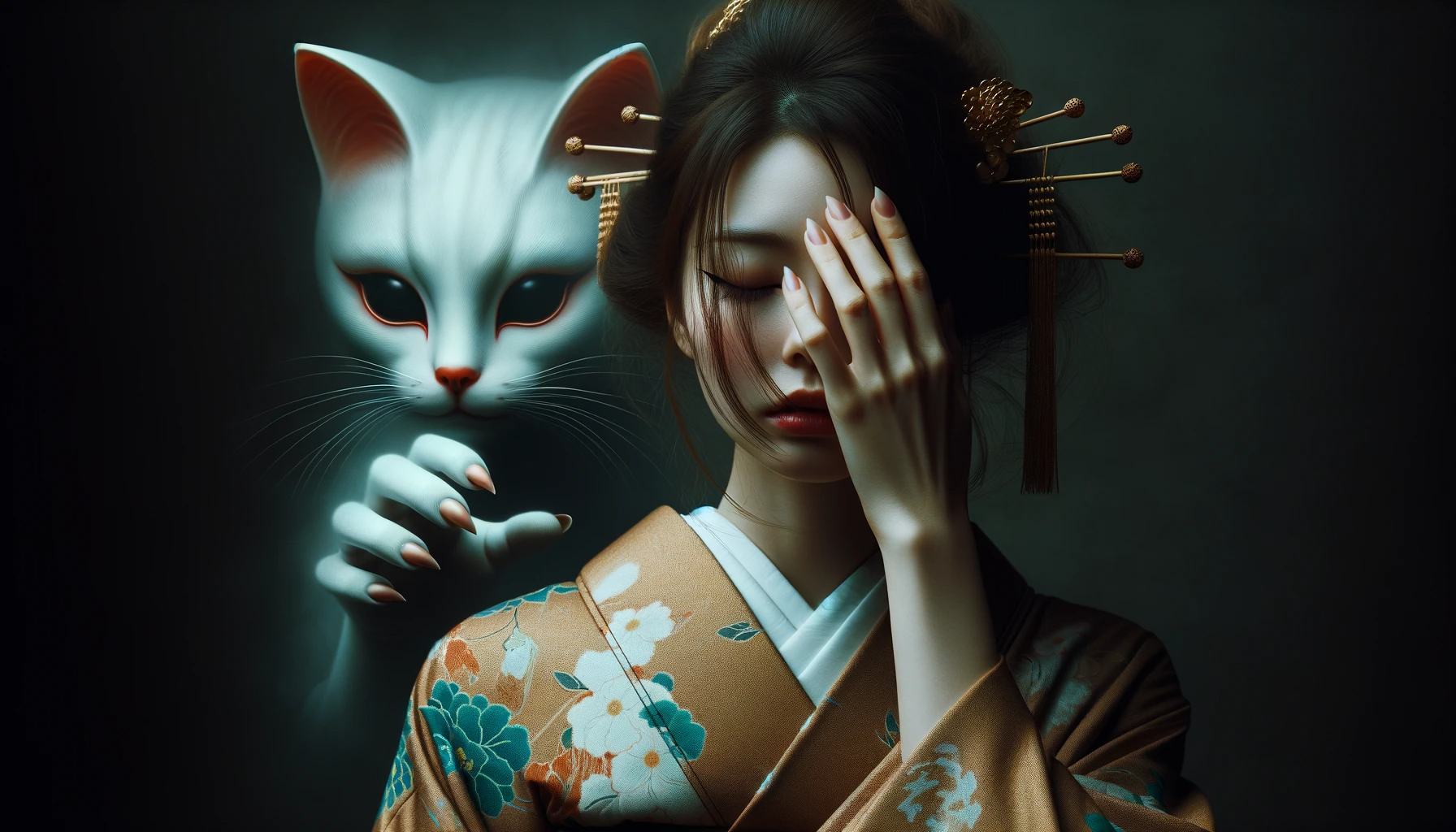
Who is the shapeshifting cat Bakeneko?
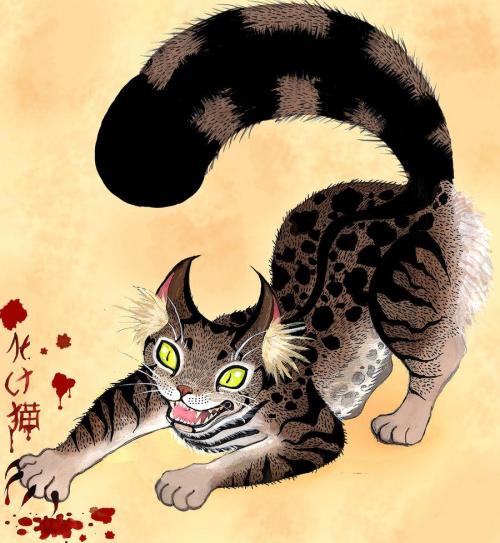
Bakeneko are often portrayed as cunning and sly, and their behavior ranges between playfulness and malice. They are known for their ability to speak in a human voice, which they use to deceive and mislead people. They can manipulate objects, and even create fireballs or use their tail as a torch.
The History of Bakeneko
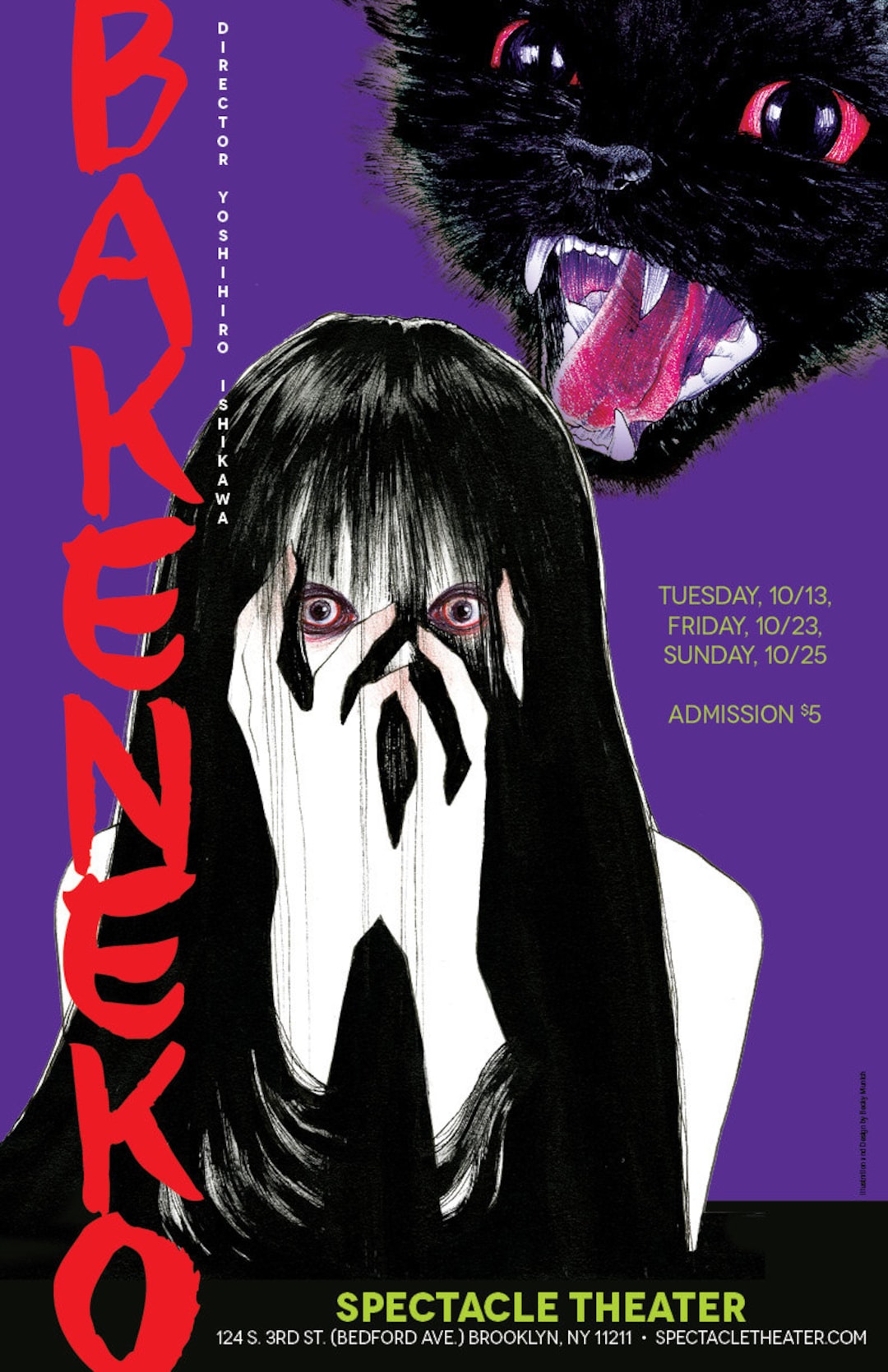
In Japanese culture, bakeneko occupy a unique place as beings that balance on the edge of reality and fantasy. They symbolize unpredictability and ambiguity of nature, being both an object of fear and fascination. Bakeneko are often depicted in Japanese literature, art, and theater, playing roles as both sinister antagonists and mysterious and clever manipulators. Their presence in stories usually heralds an unexpected turn of events (usually unfavorable for humans), introducing unpredictability and chaos.
The best way to understand what or who bakeneko are is to familiarize ourselves with classic stories about this demon. Below are three dark tales from Japanese folklore, where we will have the opportunity to see how bakeneko operates.
The Tale of the Bakeneko from the House of Nabeshima
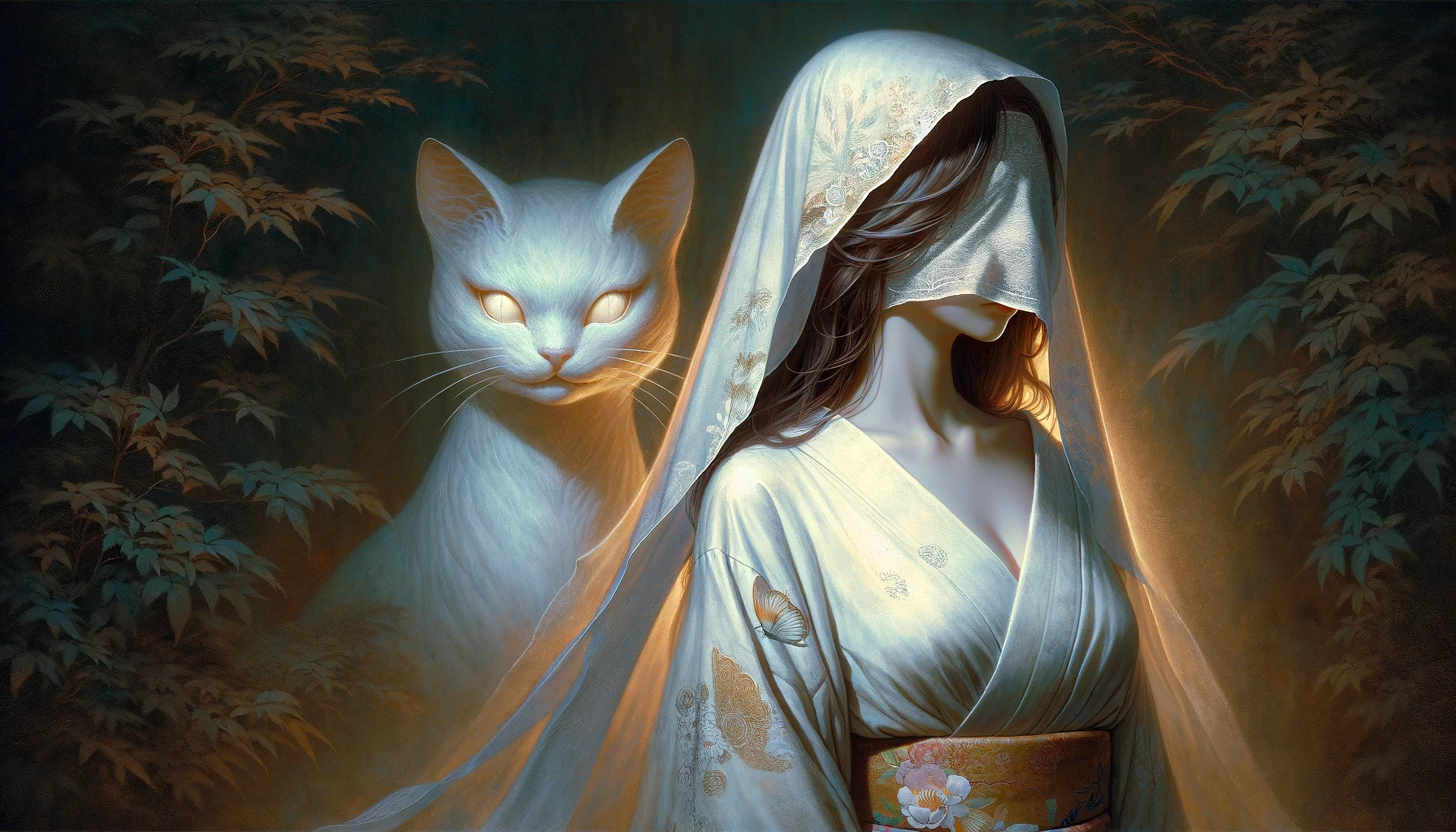
According to the legend, after the death of the cat, the estate of Prince Nabeshima began to be haunted by a series of unexplained and terrifying events. The bakeneko, utilizing its supernatural abilities, took the form of one of the court ladies, whom the prince held in special regard. This cunning maneuver allowed it to introduce chaos and destruction into the life of the estate.
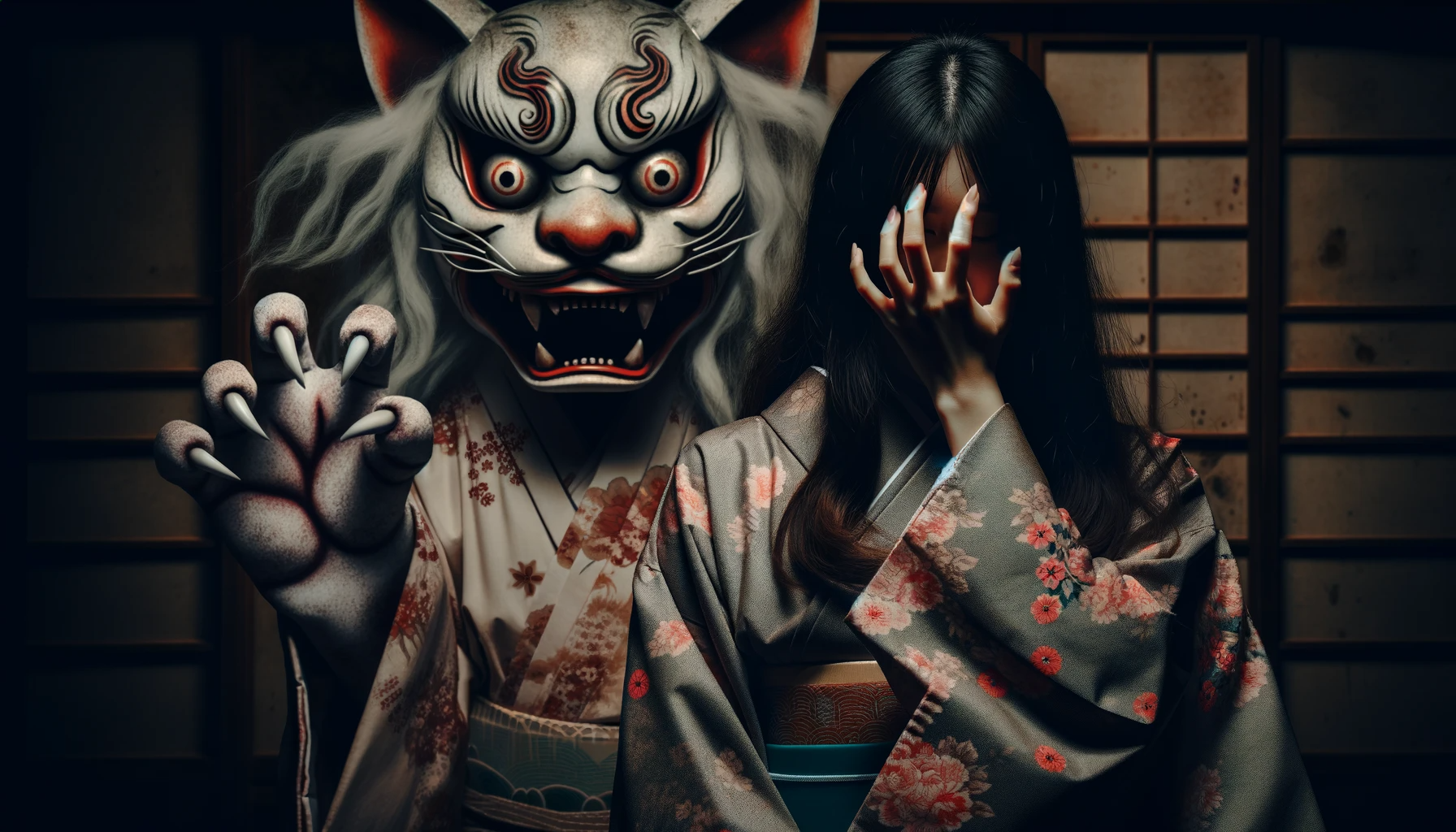
Eventually, when the prince began to feel the influence of the sinister presence of the bakeneko, he decided to call for the help of a samurai known for his courage and cunning. After a lengthy investigation, the samurai discovered the true nature of the supposed court lady. In a decisive confrontation, the samurai faced the demon and, after a dramatic battle, managed to defeat it.
The moral of this story is multi-layered. On one hand, the tale warns against neglecting and underestimating those who surround us, suggesting that even the closest beings to us may harbor unknown dangers. On the other hand, it emphasizes the importance of vigilance and courage in the face of the unknown. It draws attention to the fact that even in familiar surroundings, among known people, where it seems nothing can surprise us – we may encounter danger. The bakeneko from Nabeshima becomes a metaphor for hidden evil, betrayal, and falsehood, making this story in Japanese folklore disturbing and ominous.
The Tale of the Bakeneko from Yotsuya Kaidan
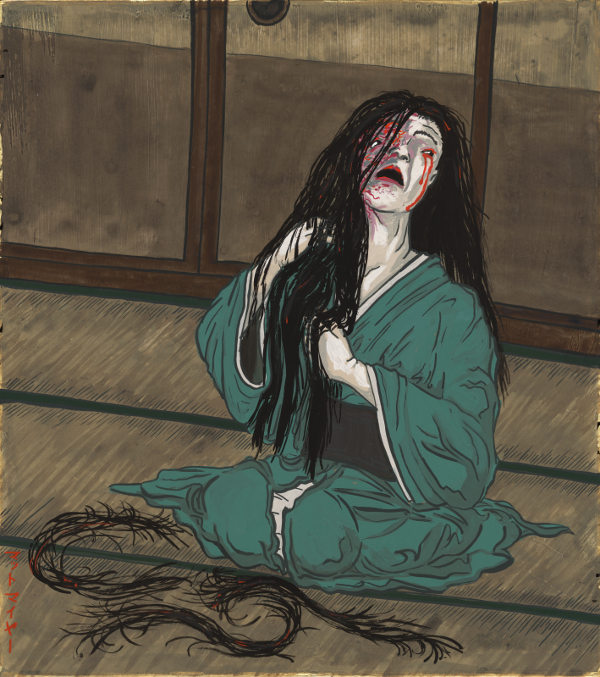
In the dark tale of Oiwa and Tamiya Iemon, the heart of the drama unfolds in the shadow of betrayal and fatal decisions. Iemon, burning with the desire to marry the beautiful and wealthy Oume, decides to rid himself of his current wife, Oiwa, in the most cruel way. He hires Takuetsu, a wicked man, who administers poison to Oiwa, disguised as medicine for her chronic ailments. 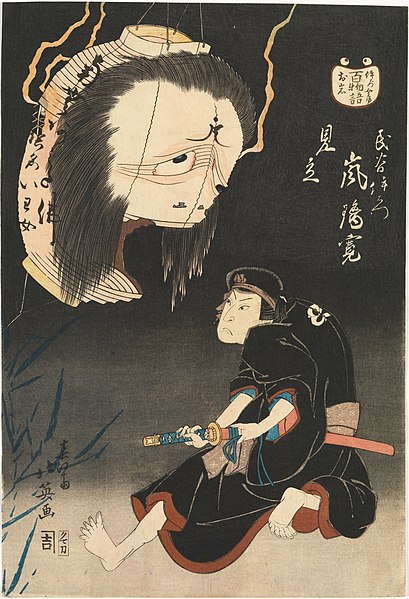
Oiwa, unaware of her husband's betrayal, dies in agony, her last moments filled with suffering and a sense of hopelessness. At the moment of her death, realizing her husband's betrayal, her spirit transforms into a bakeneko, and her anger and desire for revenge become her driving force. The spirit of Oiwa, now as a deformed and terrifying bakeneko, begins to haunt Iemon, who, without remorse, unaware, continues his life.
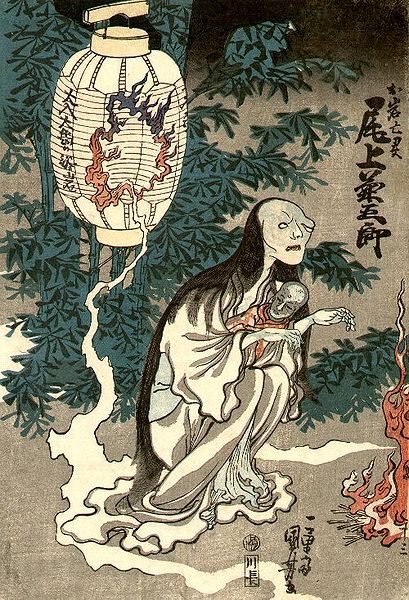
Over time, the spirit of Oiwa becomes increasingly aggressive, and her presence affects everyone around Iemon. The story serves as a warning against the consequences of harming the innocent and a reminder that the evil inflicted on others can return to exact revenge in the most terrifying way. Oiwa as a bakeneko becomes a symbol of the endless cycle of revenge and a reminder that true justice can take the most unexpected and terrifying forms.
The Bakeneko of the Ashikaga Samurai Clan
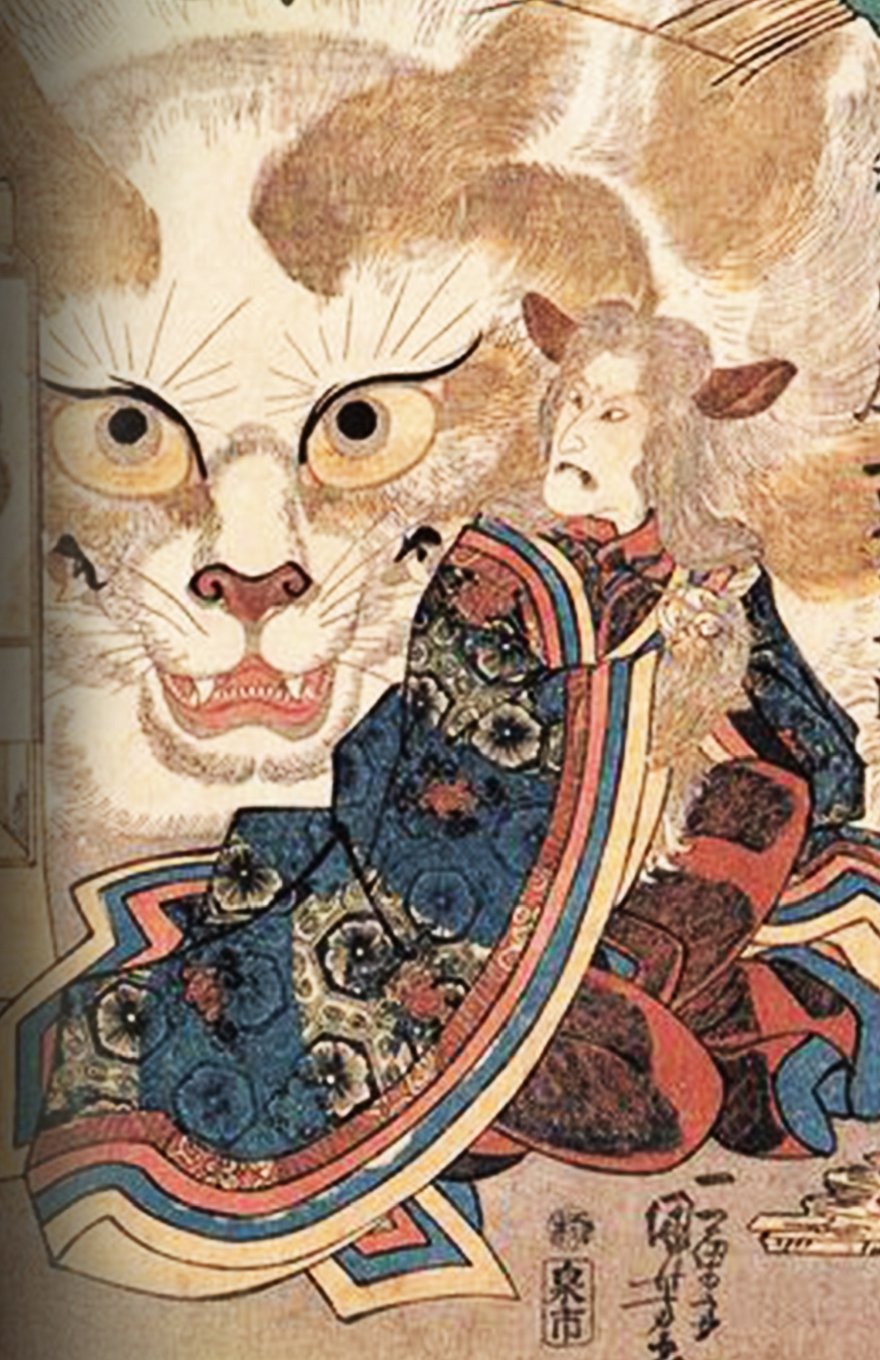
One day, when the head of the family died under unexplained circumstances, it was suspected that something more than a common illness was behind the death. Shortly after this event, the cat disappeared, only fueling rumors and fear among the estate's residents.
At night, unusual events began to occur in the house. Residents reported hearing strange sounds and visions of glowing cat eyes in the darkness. Most disturbing, however, were the stories of a cat-like figure that flitted through the corridors and bedrooms, emitting terrifying sounds.
Over time, these events began to be associated with the bakeneko. It was said that the Ashikaga cat, after many years of living on the estate, had become a powerful spirit that decided to take control of the house after the death of its master. The spirit of the cat was said to haunt the household, sowing fear and chaos among its residents.
The story of the bakeneko from the Ashikaga clan serves as a caution against the unknown and supernatural. It highlights that even the most trusted and close beings to us may harbor dark secrets. This tale also serves as a reminder that in the world of spirits and demons, the lines between reality and legend are often blurred, and the past can have unexpected and terrifying consequences for the present.
In all three stories, there is a common denominator – the bakeneko becomes a symbol of something ominous, unknown, and dark, lurking in what we know and assume to be close and safe to us.
Bakeneko in Pop Culture
Bakeneko, as a part of the rich heritage of Japanese mythology, also finds its place in pop culture. Its mysterious and often disturbing nature has inspired creators of many anime, manga, computer games, and films. In these contemporary adaptations, the bakeneko often plays the role of both a sinister antagonist and a mysterious and intriguing character.
Anime/Manga

This anime tells the story of a teenager who can see spirits and youkai, including bakeneko. One of the main characters is a bakeneko named Madara, often taking the form of a stuffed cat. Madara serves as a guardian and companion to the main character, helping him interact with the spirit world.
"Mononoke" (2007, creator: Kenji Nakamura, not to be confused with "Mononoke Hime")
This anime is a spin-off of the series "Ayakashi: Japanese Classic Horror" and focuses on a "Ghost Doctor" battling various youkai, including bakeneko. The bakeneko appears here as one of the mysterious and dangerous entities that the main character must confront.
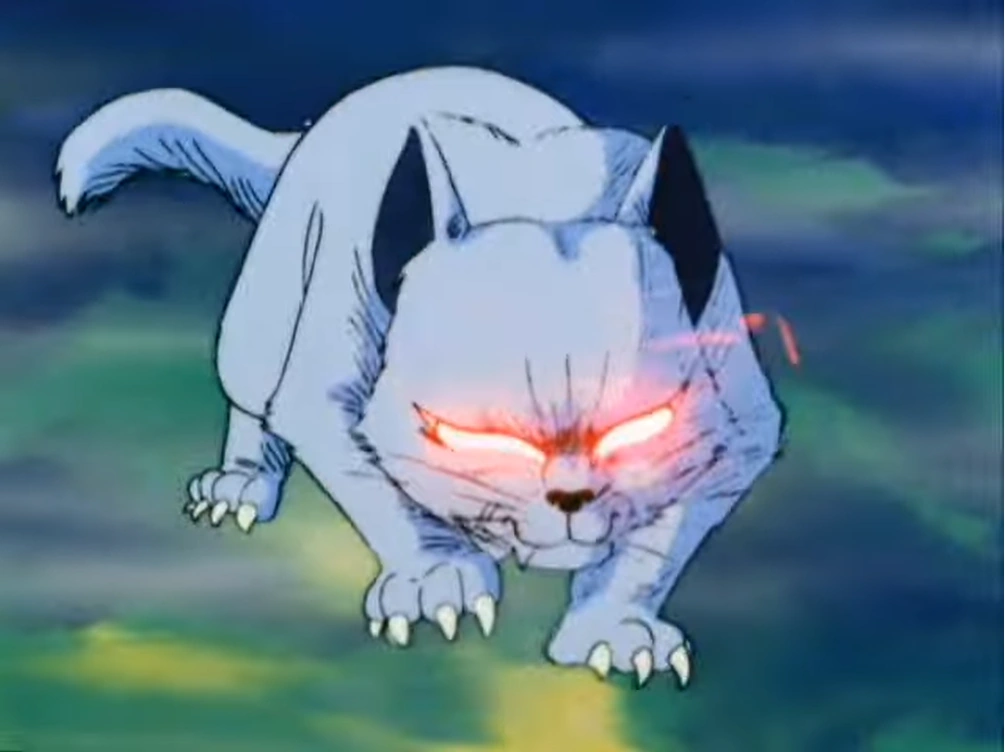
In this classic manga and anime series, the bakeneko appears as one of the numerous youkai. The series follows the adventures of the titular Kitaro - a youkai boy who protects humans from evil spirits and monsters, including the bakeneko.
Video Games
"Nioh" (2017, Team Ninja)
In this action RPG game, set in a stylized feudal Japan, players encounter various youkai, including bakeneko. These characters appear as opponents that the player must fight, showcasing their magical powers and agility.
 "Cyberpunk 2077" (2020, CD Projekt)
"Cyberpunk 2077" (2020, CD Projekt)
True to the nature of the bakeneko – a youkai that always appears where it is least expected, it made its appearance in a game where it would be least expected. In "Cyberpunk 2077," a direct reference to bakeneko appears in one of the final missions. In this scene, the player encounters a holographic projection of a bakeneko, which is commented on by Takemura, an employee of the Arasaka corporation. The appearance of the bakeneko in this mission is a symbolic reference to Japanese mythology and culture, blending traditional elements with the futuristic world of the game.
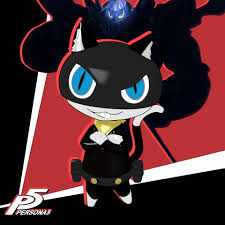
"Persona" (since 1996, Atlus)
In the "Persona" RPG series, the bakeneko appears as one of the demons/personas that the player can summon. This character utilizes its magical abilities to assist the player in battle. Fans of the fifth installment of Shin Megami Tensei might wonder if Morgana is a bakeneko?
Films
"Kuroneko" (1968, director: Kaneto Shindo)
A Japanese horror film that tells the story of two women, a mother and daughter-in-law, who are murdered by samurais and return as bakeneko to seek vengeance on all samurais. The film is a dark interpretation of the bakeneko legend, focusing on themes of revenge and justice.
"Bakeneko: A Vengeful Spirit" (1968, director: Yoshihiro Ishikawa)
This film narrates the story of a young woman who is cursed and transforms into a bakeneko. She haunts the family that wronged her, gradually uncovering dark secrets from the past.
 "Ayakashi: Samurai Horror Tales" (2006, various directors)
"Ayakashi: Samurai Horror Tales" (2006, various directors)
This television series adapted the story of "Yotsuya Kaidan," in which the character of bakeneko appears. In this interpretation, the spirit of Oiwa manifests as a terrifying bakeneko, haunting her treacherous husband.
Each of these adaptations presents the bakeneko in a unique way, emphasizing the diversity and richness of this character in Japanese culture. In pop culture, the bakeneko is not only a figure full of mystery but also symbolizes deeper human emotions such as revenge, regret, and the quest for justice.
Bakeneko Matsuri: The Festival of Cat Demons in Tokyo
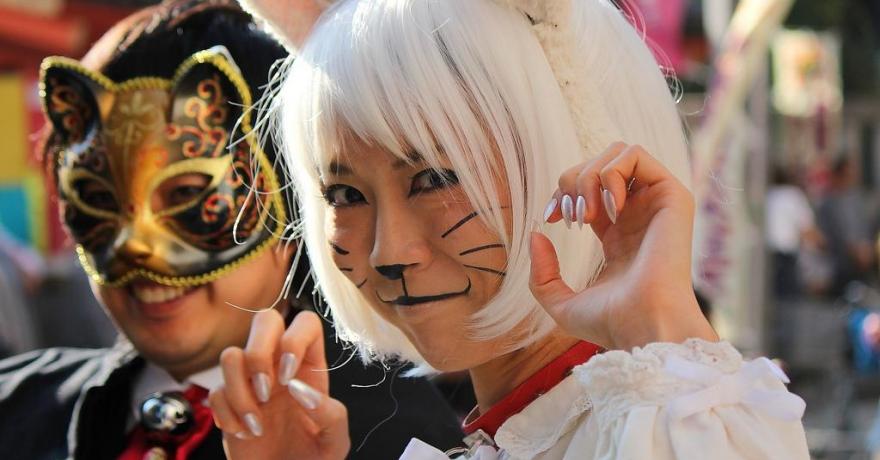
The Bakeneko Matsuri is a one-of-a-kind carnival where participants dress up in creative and often sophisticated costumes of cats and other youkai. The streets of Kagurazaka come alive with colors and energy, creating an atmosphere of both mystery and fun. Participants parade through the streets, wearing cat masks and costumes inspired by Japanese spirits, making this event visually striking.
One of the main attractions of the festival is the parade, where participants in spectacular costumes march through the district. Besides the parade, the festival offers a variety of attractions such as workshops, dance performances, and the chance to taste local delicacies. There are also stalls with handicrafts and souvenirs related to the theme of cat spirits.
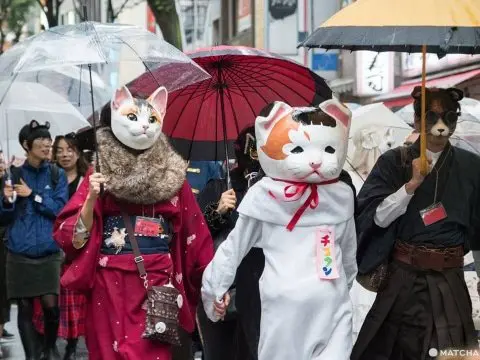
Bakeneko Matsuri not only celebrates these mythical creatures but also allows participants to interactively experience Japanese folklore. Through costumes, music, dance, and art, attendees have the chance to delve into the world of youkai, discovering the richness and diversity of these traditional tales.
The Mysteries of the Cat Demon
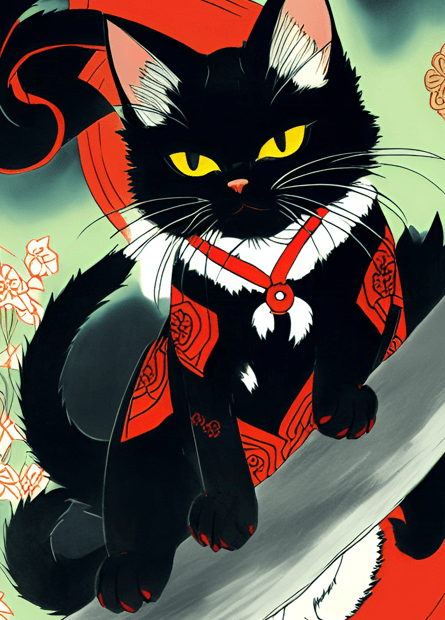
The Significance of Bakeneko in Japanese Funeral Ceremonies
In ancient times in Japan, there was a belief that cats, especially those with long tails, could disrupt funeral ceremonies. It was believed that the bakeneko had the power to resurrect the dead, and its presence near corpses could lead to unwanted consequences. For this reason, cats were often kept away from funeral ceremonies.
Bakeneko and Rice
In some regions of Japan, there was a belief that the bakeneko had the ability to turn rice grains into flies. This unusual ability symbolized not only their agility and cunning but also their connection to magic and witchcraft.
 Bakeneko and Protection from Fires
Bakeneko and Protection from Fires
Ironically, although bakeneko are often associated with causing fires, in some folk tales, they appear as guardians protecting households from fire. This can be interpreted as reflecting the dual nature of this youkai – both as a bringer of danger and a provider of protection.
In conclusion, the bakeneko is a character that has survived through the ages, traversing the boundaries between the real world and the world of legends. 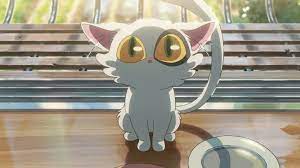
>>SEE SIMILAR ARTICLES:
The Meowing Kingdom of Tashirojima - An Island Ruled by Cats
Extraordinary and Bizarre World of Kami: An Overview of Deities in Japanese Mythology
Nō, Kyōgen, and Kabuki Reimagined: Traditional Japanese Theater in Contemporary Anime
"Strong Japanese Women"
see book by the author
of the page
未開 ソビエライ
An enthusiast of Asian culture with a deep appreciation for the diverse philosophies of the world. By education, a psychologist and philologist specializing in Korean studies. At heart, a programmer (primarily for Android) and a passionate technology enthusiast, as well as a practitioner of Zen and mono no aware. In moments of tranquility, adheres to a disciplined lifestyle, firmly believing that perseverance, continuous personal growth, and dedication to one's passions are the wisest paths in life. Author of the book "Strong Women of Japan" (>>see more)
Personal motto:
"The most powerful force in the universe is compound interest." - Albert Einstein (probably)
Mike Soray
(aka Michał Sobieraj)
未開 ソビエライ
An enthusiast of Asian culture with a deep appreciation for the diverse philosophies of the world. By education, a psychologist and philologist specializing in Korean studies. At heart, a programmer (primarily for Android) and a passionate technology enthusiast, as well as a practitioner of Zen and mono no aware. In moments of tranquility, adheres to a disciplined lifestyle, firmly believing that perseverance, continuous personal growth, and dedication to one's passions are the wisest paths in life. Author of the book "Strong Women of Japan" (>>see more)
Personal motto:
"The most powerful force in the universe is compound interest." - Albert Einstein (probably)
Mike Soray
(aka Michał Sobieraj)
Write us...
Ciechanów, Polska
dr.imyon@gmail.com
___________________
inari.smart
Would you like to share your thoughts or feedback about our website or app? Leave us a message, and we’ll get back to you quickly. We value your perspective!

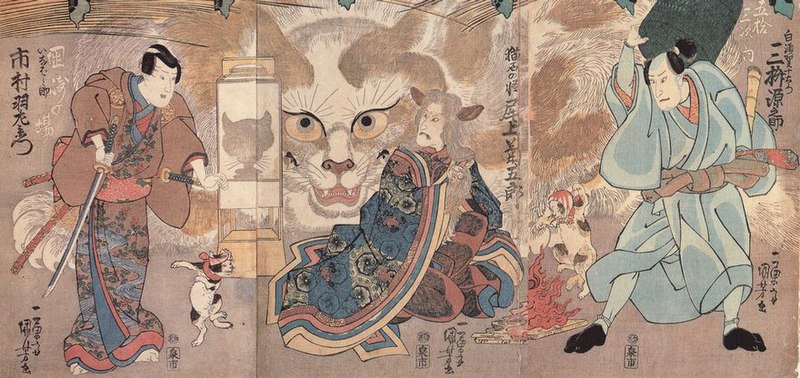

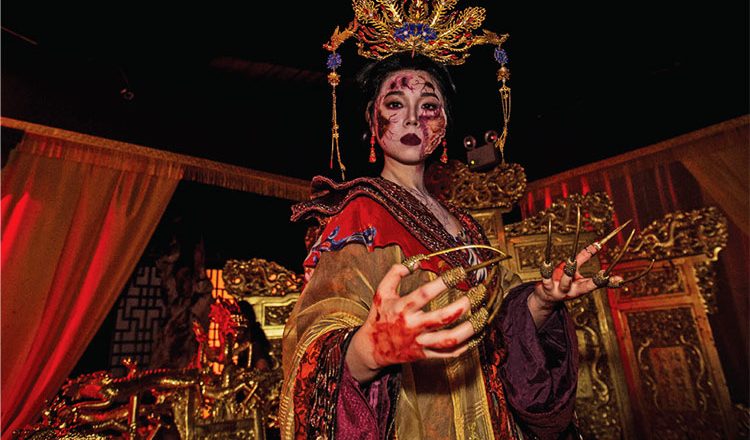
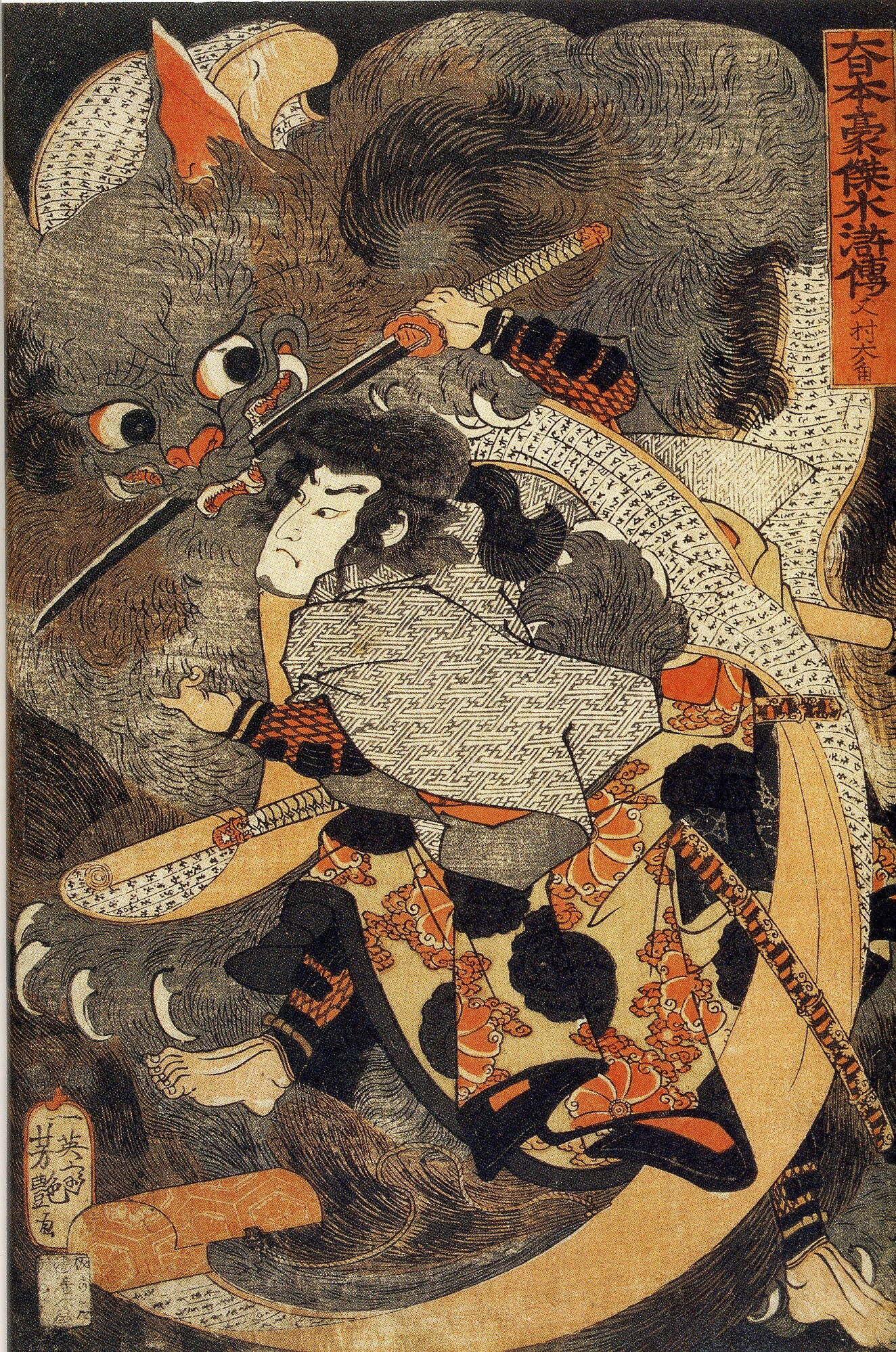
 "Cyberpunk 2077" (2020, CD Projekt)
"Cyberpunk 2077" (2020, CD Projekt)
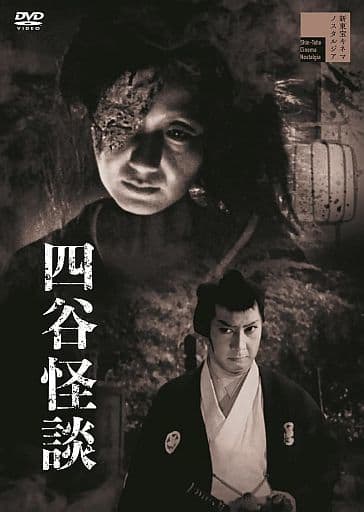 "Ayakashi: Samurai Horror Tales" (2006, various directors)
"Ayakashi: Samurai Horror Tales" (2006, various directors)
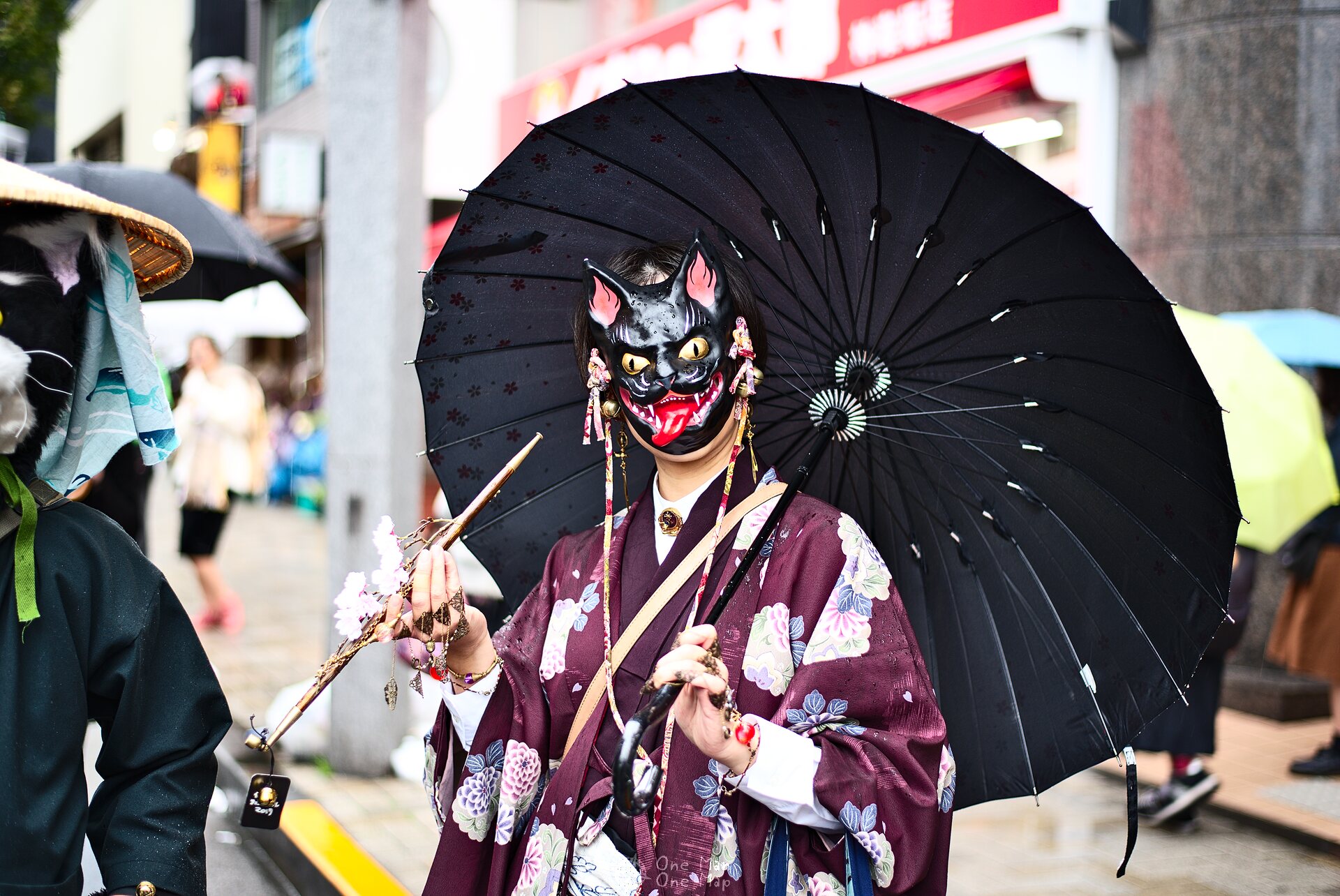
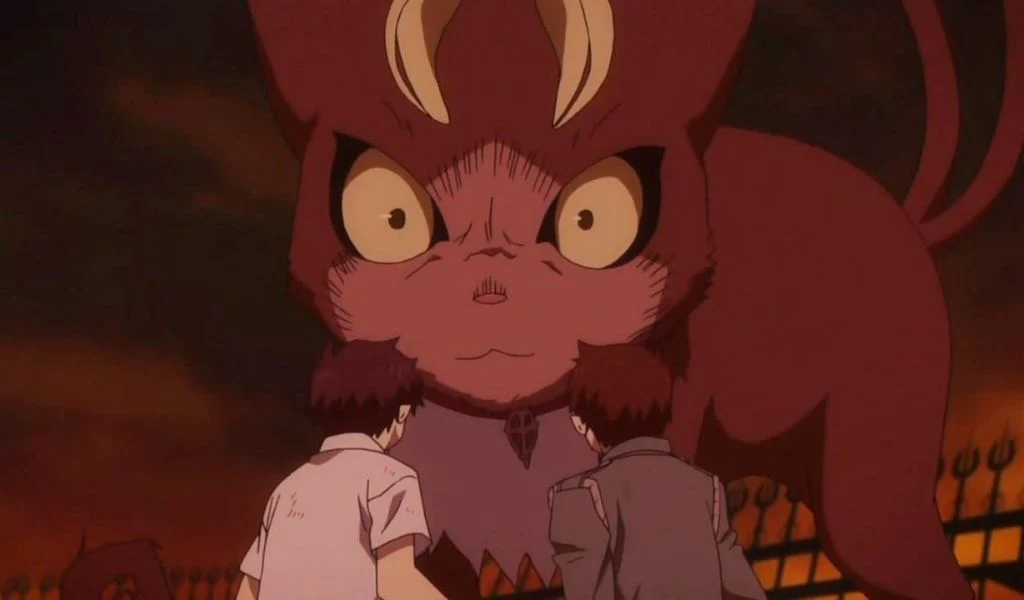 Bakeneko and Protection from Fires
Bakeneko and Protection from Fires
